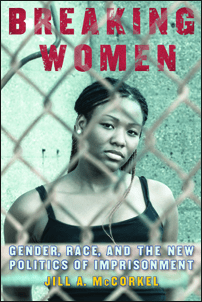Gender and Critical Drug Studies: The Gendered Origins of Privatized Prison Drug Treatment
- Jill McCorkel
- Sep 18, 2018
- 4 min read
Updated: Aug 29, 2023
Editor’s Note: Today’s post comes from Dr. Jill McCorkel, associate professor of sociology ad criminology at Villanova University in Pennsylvania. In it, she explores the origins of how drug treatment and rehabilitation programs entered private prisons for women. Her full article appears in a special co-produced edition of SHAD and CDP, Special Issue: Gender and Critical Drug Studies. Enjoy!

Dr. Jill McCorkel
I was recently in a taxi on my way to a speaking engagement in Dublin, Ireland. When the driver asked me what I’d be discussing, I told him I research prison privatization. “Ahh, yes,” he said, “the corporations run the American prisons and that’s why you have such a problem over there. They want everyone in prison. More prisoners, more profit!”
Although legal scholars would likely challenge his claim on the grounds that comparatively few prisoners in the U.S. are held in private prisons, his comments are not entirely off base. Over the last 30 years, private companies have become increasingly influential players in the American prison system. The source of their ascendancy is not private prisons. Rather, it is in the provision of a vast array of services ranging from cafeteria food to phone cards, medical care to behavioral health programming. Private companies contract with local, state, and federal authorities to provide these services in publicly managed prisons, jails, and community-based correctional facilities. The contracts are a lucrative source of profit and require little in the way of oversight. The duration and scope of privatized correctional services vary, but among the most profitable are contracts that involve the provision of drug treatment programming to prisoners, parolees, and pretrial detentioners. Drug treatment and related rehabilitative services are a multi-billion dollar (USD) a year industry. In my article for the special issue of Contemporary Drug Problems, I explore the origins of privatized, prison-based drug treatment. I argue that during the War on Drugs, women’s prisons were utilized as testing grounds for private companies interested in getting into the expanding business of drug rehab.

This business model, however, was not nearly as profitable over the long term. Although prison and jail populations continued to grow, reliance on private prisons for state and federal prisoners plateaued. So did profits. The only way private companies could run a prison more cheaply than the state was by severely cutting back on personnel. This gave rise to a number of problems including prisoner escapes, violence, and class action lawsuits. By 2000, stock in CoreCivic lost 93% of its value following news coverage of violence and poor conditions in its facilities.[1] In light of these troubles, how does a private prison company expand or even just retain its market share? Some continued down the path of “get tough” and shilled stun guns, ankle monitors, surveillance technologies, and restraint devices to correctional facilities and law enforcement agencies. A few, including the company I studied, took a gamble on drug treatment and behavioral health services. Although there was no appreciable demand for rehab-related programming during the early years of the prison boom, some companies (correctly) anticipated a change of course. It was a smart bet. Continued growth in the prison and jail population was driven primarily by increases in the number of people charged and convicted of drug offenses. When lawmakers realized they could no longer build their way out of the prison crisis, they sought alternate solutions. Private prison companies were ready for them. By 2013, both the Geo Group and Core Civic had spent millions of dollars to add drug treatment and behavioral health services to their arsenal.
Women’s prisons were crucial to the development of this alternate profit model. Compared to men’s prisons, women’s prisons serve as an ideologically hospitable site in which to develop drug treatment. Rehabilitation as both an ideology and a set of practices is the hegemonic system of control in women’s prisons. In contrast, rehabilitation enjoys less support in men’s prisons, assuming a more faddish quality that waxes and wanes in significance and rarely operates as an institutional priority. In addition, drug war policies generated overcrowding crises in women’s prisons that became increasingly urgent throughout the 1990s. From 1980 to 2014, the number of incarcerated women in jails and prisons increased by more than 700% from 26,000 to over 215,000.[2] Much of this growth was driven by women serving mandatory sentences for drug-related crimes. The company I studied, Prison Services Inc. (a pseudonym), sold prison officials on the need for drug treatment services by arguing that prison overcrowding was not a function of mandatory sentencing polices but of drug addiction left untreated. The company won a contract to provide services in the state’s only prison for women. Within a few years, they were marketing themselves as pioneers in the field of correctional drug treatment and went on to pick up contracts in men and women’s facilities across the country.
NOTES:
1.) Greene, J. (2001, December 19). Bailing out private jails. The American Prospect. Retrieved http://prospect.org/article/bailing-out-private-jails
2.) Sentencing Project (2015). Fact Sheet: Incarcerated Women and Girls. Washington, DC: Sentencing Project
